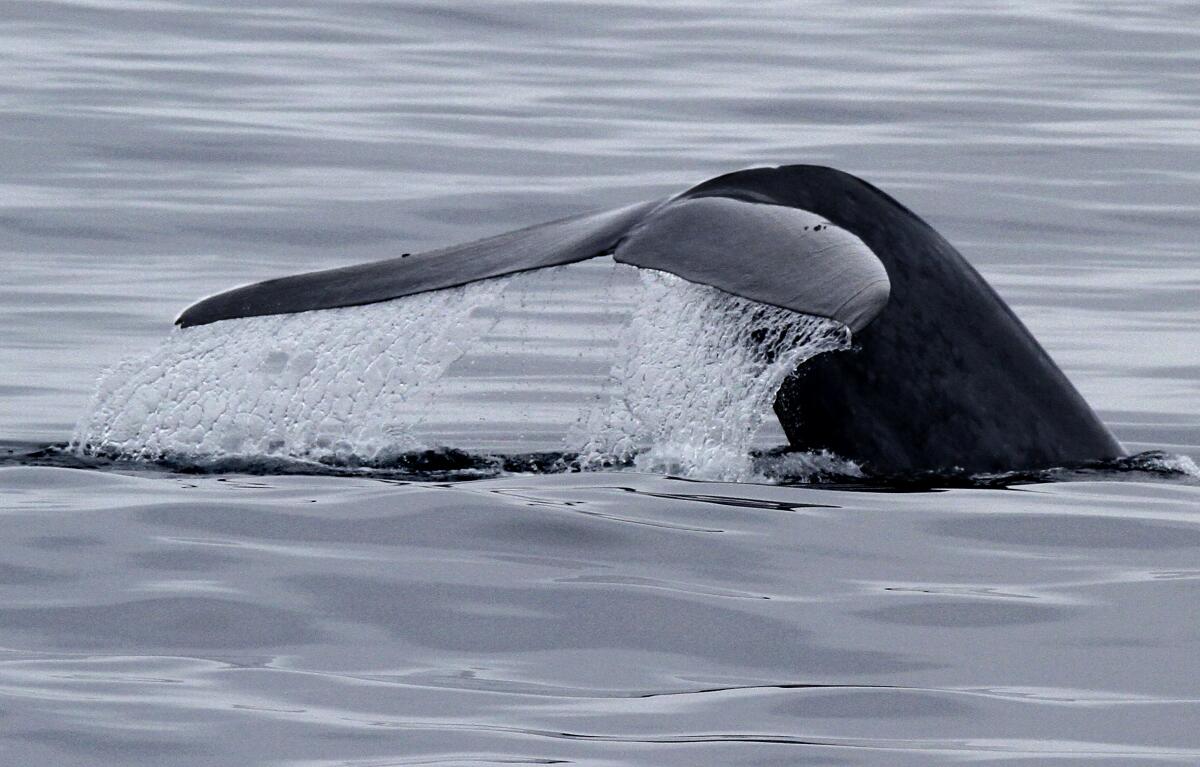Apodaca: Misinformation, paired with disinformation, fuels today’s divisive times

- Share via
Blue whales had been sighted in the waters off coastal Orange County.
The largest animals to have ever existed, blue whales can span 100 feet in length and weigh up to 200 tons. The tongue alone can balance an elephant on a scale; the heart weighs as much as a car.
These are seriously cool creatures, and I badly wanted to see one, so I signed up for a whale-watching excursion out of Newport Harbor. As our small boat carrying about a dozen passengers zipped across the water, I asked one of the crew members about the posted numbers of sightings.
Be mindful when considering those numbers, he cautioned, that “sightings” don’t equal the number of whales. One whale might be spotted several times in any given day, and those sightings are then reported separately.
He was obviously trying to dampen expectations in the event that our expedition proved fruitless. Nonetheless, I appreciated the clarification. Someone might see the figures showing a multitude of whale sightings and picture waters teeming with easily spotted behemoths, whereas the reality might be quite different.
Which brings me to my point, which is not about whales, per se, but about how easily information can be misinterpreted and misused.
Columnist Patrice Apodaca writes that there is some reason for optimism regarding the O.C. economy.
That lesson applies to far more than marine mammals. Indeed, it is the story of our times. We live in an age of information overload, when trying to make sense out of our complicated world is no easy task, even when facts are clearly articulated and supported by an abundance of credible evidence.
But thanks largely to the internet and social media, what we see, hear and read is routinely tailored to specific agendas and preconceived beliefs. Misinformation — that is, incorrect information — abounds. Disinformation— misinformation on purpose — is readily accepted as fact. Both play into confirmation bias — the inclination to accept whatever fits with what we already think.
So it is with some highly charged issues that have been dominating much of our discourse.
COVID-19 vaccinations, for example.
Coronavirus infection rates are ticking up again to alarming levels, driven by the highly contagious Delta variant. Scientists warn that variants potentially even more dangerous than Delta are likely incubating in infected people around the world.
Yet about half the population in the U.S. remains unvaccinated, despite the fact that shots are widely available. We had a chance to contain the spread of the virus; now we’re looking at reinstating mask mandates and social distancing.
Why? Largely because vaccine hesitancy runs stubbornly deep. And that hesitancy is fed by a deluge of misleading to downright false information about the vaccines, which plays into widespread distrust of government and institutions.
The controversy that’s blowing up over the teaching of ethnic studies in public schools is another case in point, as it is also being fueled by wildly distorted and inaccurate information.
As districts throughout Orange County prepare to make decisions about whether and how to implement the state’s new model curriculum for ethnic studies, school board meetings have been inundated by protests against the voluntary coursework.
Sadly, the objections being voiced bear little to no resemblance to the reality of ethnic studies. That was evident at a recent Orange County Board of Education forum, where many of the comments revealed a lack of understanding about ethnic studies and reflected the kind of talking points found in propagandist playbooks.
For the record, the model ethnic studies curriculum is designed to teach students about the histories, contributions, cultures and struggles of ethnic groups that have historically been overlooked. It is intended to promote empathy, understanding and inclusivity.
Ethnic studies is not, as critics contend, analogous with critical race theory, an even more controversial means of examining the ways that racism is embedded in legal and institutional structures, which is taught primarily in law schools and some college courses.
Contrary to a highly influential disinformation effort, ethnic studies is also not inherently divisive, it doesn’t teach white kids that they are oppressors, and it is not rooted in Marxist ideology.
Faulty information and skewed logic were also on display at a recent Newport-Mesa Unified school board meeting, where many commenters objected to a well-run anti-bias, anti-bullying training program.
The majority of board members voted to pause the program, indicating that more research was needed before deciding whether to renew the contract, which is overseen by the Anti-Defamation League.
Fair enough. Take some time and do a thorough, unbiased investigation. But I urge the board to base their final decision on facts, not on an alternate-universe theory in which the teaching of compassion and acceptance is viewed as an evil mind-control plot.
I never did see a blue whale. But I was OK with that. I had a splendid time, with plenty of frolicking dolphins, comical sea lions and even a few seals on hand for amusement. I reveled in the real world that was before me, not the cartoonish one I might have imagined had I clung to some misguided notions about the frequency of whale sightings.
My day on the water was a tonic, distracting me briefly from the harshness of our age and the deep-seated hostilities that threaten to engulf good judgment and cooperation. Far too many of us are chasing whales that aren’t there, and that pursuit promises only tragic results.
All the latest on Orange County from Orange County.
Get our free TimesOC newsletter.
You may occasionally receive promotional content from the Daily Pilot.





